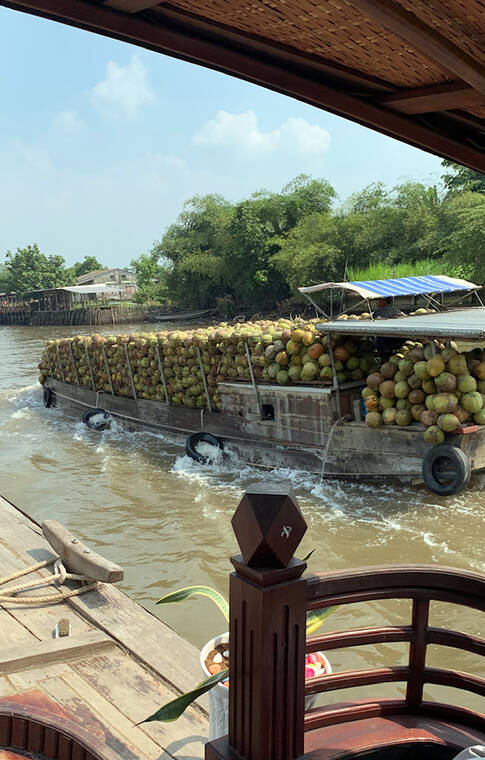The Coconut palm we use in our landscapes is more than an ornamental tree. It is an essential food supply to many islanders throughout the tropics. It is like money in the bank if we ever got cut off from the rest of the world.
When the first Polynesians arrived in these islands, there were very few plants available as a food supply. Fortunately, they brought a great variety with them that we refer to as canoe plants. These included banana, sugar cane, breadfruit, mountain apple, taro, coconut and scores of others. They also brought pigs, jungle fowl and rats that changed our forests forever. At first, Hawaiians had to survive on food from the sea, seabirds, flightless birds like the Nene and others that soon became extinct. Once they established their gardens, life likely became much easier.
Coconut palms may propagate themselves when conditions are just right, but more often they need the assistance of humans. It was typical to continuously plant new palms as the older trees began to reach their life’s end. Today, we see many palms being removed as they get too tall to economically prune. This is the ideal time to plant the dwarf varieties. Without our help the specie would fade and we would lose this valuable food supply.
Hawaiian gardens include hundreds of species of rare ornamental palms. When it comes to species of palms in the world, there are thousands with more discovered each year. They come from the high mountains like the Andean wax palms that live at 13,000 feet above sea level to equatorial rainforest species like those from the Amazon. Desert palms are another large group, but none is quite so close to our Hawaiian hearts as the coconut palm. The coconut palm group is composed of scores of varieties including some dwarf types that should be used more in Hawaii. Not only are they shorter and easy to harvest, they are resistant to a devastating disease referred to as lethal yellowing. Our endemic loulu palms (Pritchardia species) are very prone to this disease.
Palms here have few serious diseases at present. Hawaii’s palms may be affected by bud rot or stem bleeding disease that is often caused by physical damage such as unsanitary pruning equipment or climbing spikes. Most palms showing yellow or stunted growth have been found to be suffering from lack of fertilizer or water. For example, a recent report came from concerned citizens calling about the dead and dying trees around the island. The trees simply need a balanced fertilizer plus minor elements, applied 3 to 4 times per year, and regular irrigation. Over pruning or removal of too many leaves can also cause their demise by creating a condition called pencil top. The trunks become thinner and are prone to snapping off just below the crown.
All these problems are correctable, but if lethal yellowing ever got to Hawaii, there is no practical way of stopping destruction of our islands’ palms. Not only would coconut palms be destroyed, but over a hundred species of native and exotic palms would also die. Hawaii is fortunate to be far from disease infected regions, but it is vital that we don’t introduce this and other plant plagues. It is important to cooperate with the Hawaii and Federal Departments of Agriculture and follow all the rules of inspection. Don’t be the cause of this plague or any others by carelessness.



